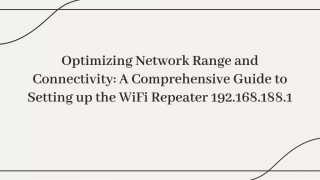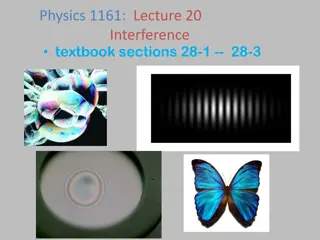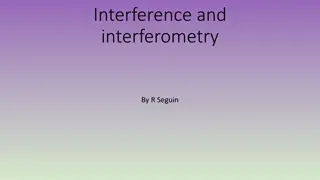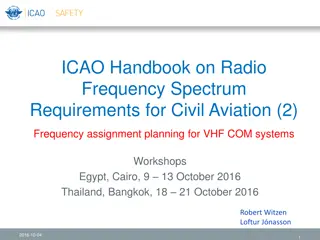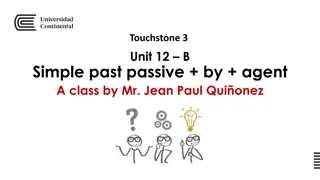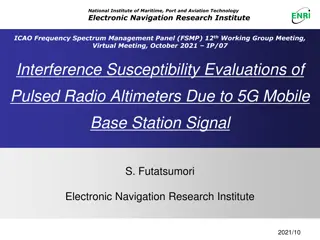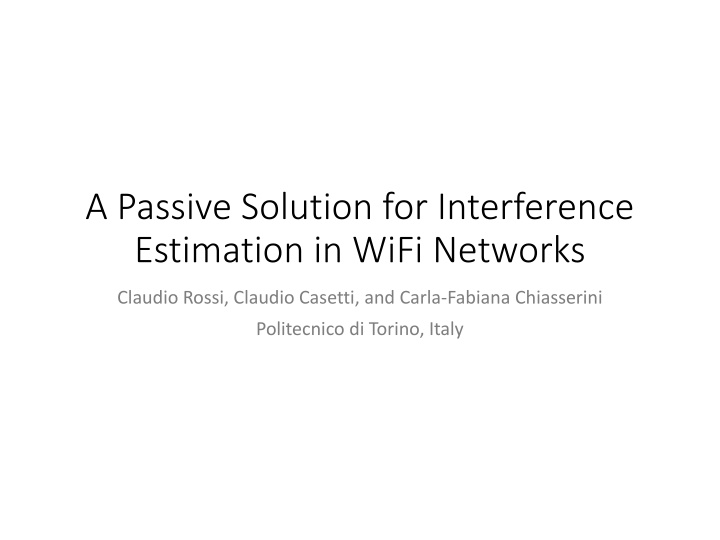
Passive Solution for Interference Estimation in WiFi Networks
Implementing a passive MAC-layer approach to estimate interference in WiFi networks, this work focuses on inferring and computing interference through methods like measuring time intervals and assessing saturation throughput. The system implementation involves practical computations to understand interference impact.
Download Presentation

Please find below an Image/Link to download the presentation.
The content on the website is provided AS IS for your information and personal use only. It may not be sold, licensed, or shared on other websites without obtaining consent from the author. If you encounter any issues during the download, it is possible that the publisher has removed the file from their server.
You are allowed to download the files provided on this website for personal or commercial use, subject to the condition that they are used lawfully. All files are the property of their respective owners.
The content on the website is provided AS IS for your information and personal use only. It may not be sold, licensed, or shared on other websites without obtaining consent from the author.
E N D
Presentation Transcript
A Passive Solution for Interference Estimation in WiFi Networks Claudio Rossi, Claudio Casetti, and Carla-Fabiana Chiasserini Politecnico di Torino, Italy
Introduction Overcrowded, arbitrary deployment of home WLANs interference from neighboring Access Point (AP) and non-802.11 devices Existing works traffic injection: affect normal network operations trace collection and subsequent analysis: offline applicability centralized controller or specific-functional WiFi chipset This work MAC-layer approach (passive) Impact of interference saturation throughput 802.11a, b, and g, easily extended to DCF with handshake as well as to the 802.11e/n EDCA
Inferring Interference the AP estimates whether the channel is sensed busy because of legitimate ongoing transmissions or because of interference Te(k) v.s Tm(k) infer whether unaccounted-for signals (interferers) are cluttering the channel Measured time interval ta(k)-tx(k) Expected time interval The fraction of time taken by interferers Total number of frames transmitted by the AP
Expected Time Interval the case where the AP repeats the transmission of a frame four times before success S: SIFS D: DIFS A: ACK F: Freeze 1. the transmission duration of the data frame 2. the retransmission timeout To 3. the backoff time associated with the i-th attempt 4. the DIFS time intervals Failed transmissions Successful transmission Number of WSs Failed transmissions Approximation error Successful transmissions Non-colliding transmission
Computing of the Saturation Throughput Practical understand the impact of interference AP computes: average size of the frame payload (P), maximum payload size (Pmax), average data rate (data and ACK), average PER (pe), and number of active WSs the probability that a node accesses the medium at a generic time slot The average size of the frame payload the average duration of a time interval in which an event occurs
System Implementation Implement at mac80211 module of the Linux wireless driver compact-wireless 2011-21-01 implement the computation of S and Sinwith a simple user-space program that reads the measurements from file system
Experiment Setup 18 detectable APs part of 6 different SSID, whose signal is received at an average strength of 83 dBm 2 stations and 2 APs Each AP runs the modified driver for the computation of I and the application for the computation of S and Sin BSS1 operates on channel 6 while BSS2 acts as an interferer saturate BSS1 s capacity with a downlink UDP flow from the server to WS1 (through AP1), at a rate of 30 Mbps BSS1 BSS2
Performance on Different channel No traffic within BSS2 30 Mbps from server to WS2
varying both the channel used by the interferer (BSS2) and its offered load AP2 operates on channel 6, 7, 9, 11 Channel 6 Channel 11
varying both the channel used by the interferer (BSS2) and its offered load
Non-WiFi Devices Interference Bluetooth file transfer between 26-50 s Bluetooth adaptive frequency hopping scheme
Non-WiFi Devices Interference analog video sender as interferer from 26 s
Conclusion designed and implemented a technique for interference estimation in 802.11 WLANs Implemented at the access point and does not require any specialized hardware validated our technique in a 802.11g network with different types of interferers Can estimate the impact of interference with excellent accuracy, under different scenarios


